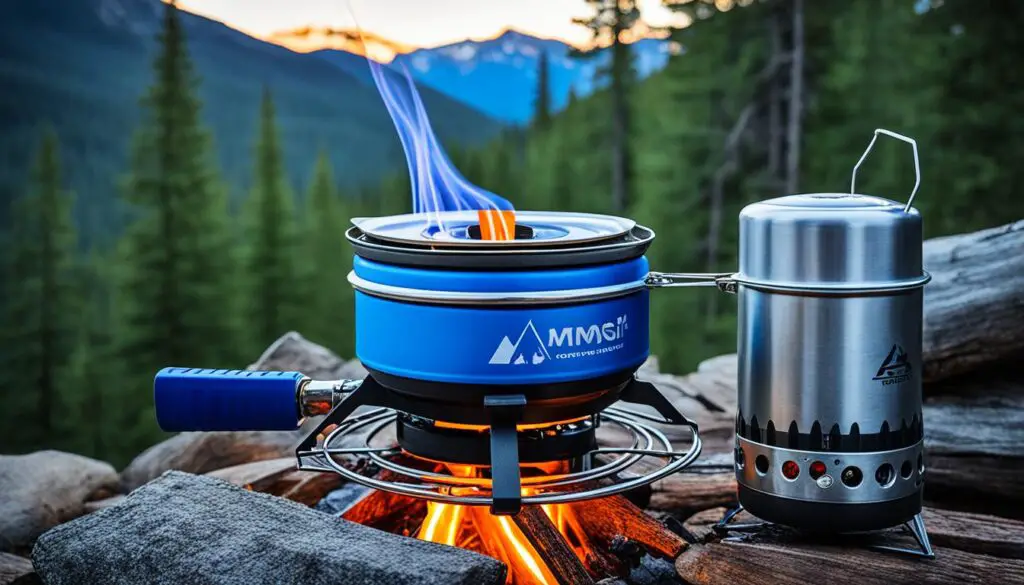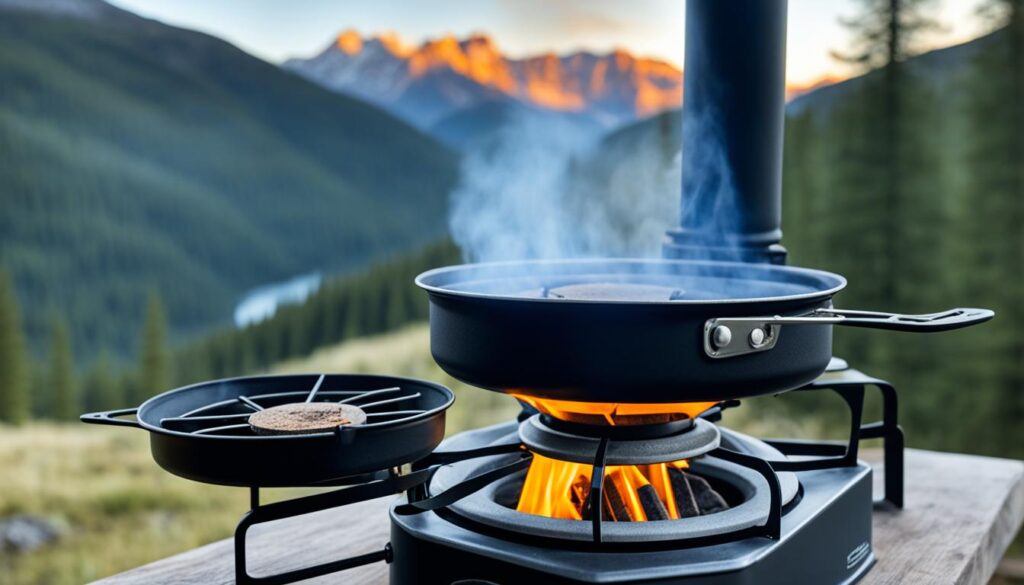Can You Use Camping Stove Indoors
As an avid camper and outdoor enthusiast, I’ve often wondered about using a camping stove indoors. It’s tempting during bad weather. But, the risks are high. So, I’ll talk about the dangers, safety tips, and when not to use your camping stove indoors. This is to make sure you stay safe.
Understanding the Risks of Indoor Camping Stove Usage
Using a camping stove inside can be very risky. This includes dangers like carbon monoxide poisoning and fires. It’s important to know these risks and how to stay safe.
Carbon Monoxide Poisoning Hazards
Carbon monoxide is a gas you can’t see or smell. It comes from burning fuel incompletely, such as in camping stoves. Without good ventilation, this gas can build up indoors. This can lead to carbon monoxide poisoning. Signs of poisoning are headaches, dizziness, and nausea. In severe cases, it can cause death.
Fire Dangers and Safety Precautions
Having a camping stove inside also means there is a risk of fire. Open flames and hot surfaces could easily set off a fire. This could happen with things like furniture, curtains, or clothes if they are too close. To keep safe, make sure to:
- Put the camping stove on something solid and not flammable.
- Don’t let any flammable stuff be close to the stove.
- Keep the stove away from walls or any other structures.
- Have a fire extinguisher ready and know how to use it.
By knowing the dangers and being careful, you can cut down the risks of using a camping stove inside. Keeping yourself safe is the most important thing when using this equipment inside.
| Potential Hazard | Description | Safety Precautions |
|---|---|---|
| Carbon Monoxide Poisoning | Odorless, colorless gas produced by incomplete combustion, can lead to serious health issues or even death | Ensure proper ventilation, install carbon monoxide detectors |
| Fire Hazards | Open flames and hot surfaces can ignite nearby flammable materials, posing a risk of fire | Place stove on a stable, non-flammable surface, keep away from combustible materials, have a fire extinguisher nearby |
Camping Stove Fuel Types and Indoor Suitability
Camping stoves come in many types, each with its fuel source. It’s key to know which ones are safe for indoor use. The right fuel choice ensures safety when cooking or heating indoors. Let’s look at the main fuel types and how they work inside.
Propane Camping Stoves
Propane is a common choice for its easy availability and low cost. But, it can be dangerous indoors. Propane stoves might lead to carbon monoxide poisoning. They are not safe to use inside because they don’t fully burn, releasing a harmful gas.
Butane Camping Stoves
Butane camping stoves are safer indoors than propane. Butane burns cleaner, creating less carbon monoxide. Yet, you still need good air flow when using it indoors to avoid breathing in harmful fumes.
Alcohol Camping Stoves
Alcohol stoves are very good for indoor use. They burn cleanly and make little carbon monoxide. These are your best bet for indoor cooking or heating, if the area is well-ventilated.
| Fuel Type | Indoor Suitability | Safety Considerations |
|---|---|---|
| Propane | Not Recommended | High risk of carbon monoxide poisoning |
| Butane | Moderate | Requires adequate ventilation |
| Alcohol | Suitable | Minimal carbon monoxide production, but still requires ventilation |
Picking the right camping stove for inside use is all about safety. You must think about the type of fuel and how it burns. Make sure the area is well-ventilated to avoid risks. Knowing the details helps you choose a stove that will keep you safe and happy indoors.

Proper Ventilation Requirements for Indoor Camping Stoves
Using a camping stove indoors means you need proper ventilation for safety. You must have enough air flow to prevent dangerous fumes like carbon monoxide. We’ll look at how to make sure your indoor camping area has good ventilation.
Calculating Adequate Air Flow
Figuring out how much air flow you need for your stove indoors is important. You have to think about room size, stove power, and how many people are inside. Aim for 15 cubic feet of fresh air per minute for every 1,000 BTUs your stove produces. This keeps the air fresh and lowers the risk of carbon monoxide.
Window and Door Ventilation Options
There are a few ways to get fresh air into your indoor campsite. Opening windows and doors helps air circulate. Make sure your stove is near an open window or door. If just opening windows isn’t enough, use a fan or system that brings in fresh air. This way, you get rid of old and maybe unsafe air.
Thinking about ventilation requirements and air flow is key with a camping stove indoors. By using good window and door ventilation setups, you can camp inside safely. This lets you enjoy indoor camping with peace of mind.
Can You Use Camping Stove Indoors?
No, it’s not safe to use a camping stove inside. They can cause carbon monoxide poisoning and start fires. It’s just too risky.
Camping stoves are made for outside for good reasons. They burn fuels that make dangerous gas. This gas, carbon monoxide, can make you very sick in a closed space. Plus, these stoves are easy to start fires with because of their flames and heat.
It’s better to cook inside the house with an electric or gas stove. These stoves are made for indoor use, so they’re much safer. They have lots of safety features and ways to take the heat and smoke out. Always follow what the stove’s manual says and keep your family safe while cooking.
FAQ
What are the risks of using a camping stove indoors?
Using a camping stove indoors can be very dangerous. It can cause carbon monoxide poisoning and fires. Carbon monoxide is a silent killer in small spaces. And, the flames from a stove can catch things on fire easily.
How can I mitigate the fire dangers of using a camping stove indoors?
To lower the fire risks, make sure the stove is on a flat, safe surface. Keep it away from things that can burn. Also, have a fire extinguisher ready and know what to do in case of a fire.
What types of camping stove fuels are suitable for indoor use?
Not all camping stove fuels are safe indoors. Propane and white gas are better choices than gasoline or kerosene. But, you still need good air flow to avoid carbon monoxide.
How can I ensure adequate ventilation when using a camping stove indoors?
You need to know how much air the stove needs and make sure rooms have enough ventilation. Open two windows or doors to let fresh air in. This stops dangerous gas from building up.
Can I use a camping stove indoors?
It’s best not to use a camping stove inside because of the big safety risks. The dangers of carbon monoxide and fires are too high. If you must cook or heat indoors, make sure you have lots of fresh air, follow safety rules, and can put out the stove quickly.
